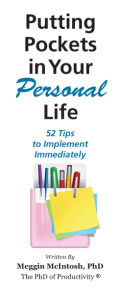Standards, Curriculum, and Textbooks by Gini Cunningham
 Teaching is not a mystery when you follow the guidelines of the school, the district, and your state standards and curriculum. There are certain concepts and skills that your students need to know and be able to do to succeed in school now – and throughout life.
Teaching is not a mystery when you follow the guidelines of the school, the district, and your state standards and curriculum. There are certain concepts and skills that your students need to know and be able to do to succeed in school now – and throughout life.
You have a responsibility to provide the tools and explanations that will help your students arrive at benchmarks for learning and then move confidently on.
The same is true with textbooks. Good textbooks have been selected by a knowledgeable team of educators who have determined them to be user-friendly and standards-based. You may supplement as needed, but follow the district guidelines for well-planned and organized instruction.
Here are ten tips to be most productive in your teaching, while using the standards, curriculum, and textbooks provided for you:
- Use your pacing map to guide your instruction by checking that all standards are taught, assessed, and re-taught as marked on your teaching calendar.
- Make certain that your pacing chart is designed with mandatory assessments in mind; students deserve to be taught what they need to know to succeed on academic assessments (remembering that not all students learn at the same pace – that’s the tricky part).
- With your vision of learning in mind, examine your textbook and match the material within to the achievement standards and benchmarks for student learning.
- Gather supplementary material that enhances the concepts and skills within the textbook, both challenge and reinforcement work.
- Periodically assess your progress as teacher-guide and the students’ progress as learners. Adjust as needed.
- Remember that textbooks are laid out in the order that a publisher finds attractive or in a fashion that matches the requests of big-time buyers (e.g., Texas, Florida, and California). Skipping from page 27 to 103 and on to 299 is fine if that is the order necessary for you to teach each standard effectively.
- Avoid busywork and other obnoxious assignments that do not advance student learners even though these keep students quiet.
- Remedial is remedial and guarantees “remedialism.” Struggling students need enrichment to fill the voids of their learning, not a slowdown method that assures that they will never catch up with their peers.
- When assessment scores are returned, self-evaluate. What have you taught well? What needs re-teaching? Where do you need to seek help for strategies and techniques to improve instruction and delivery? It is a brave and wise teacher who recognizes strengths but who also realizes areas that need improvement.
- Remind yourself: It is not that students do not or cannot “get it”; they simply have not gotten it…yet.
© Gini Cunningham (adapted from her book, The New Teacher’s Companion: Practical Wisdom for Succeeding in the Classroom (ASCD). In addition to her writing, Gini is an author, workshop leader, and consultant who provides education for educators.
And if you liked these tips, feel free to check out Putting Pockets in Your Personal Life: 52 Tips to Implement Immediately. If you know you are operating without any “pockets,” and you realize that you have lost sight of the difference between calm and crazed, then this booklet will help you regain that realization and subsequently DO something about it.
Inside, you’ll find practical ideas to implement, letting you actually choose to put in pockets in your personal life (i.e., some protected space, both the physical and metaphorical). With these 52 tips in-hand, and you’ll be well on your way to greater peace of mind and productivity.



